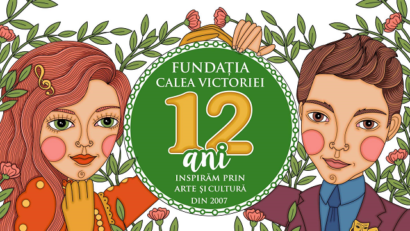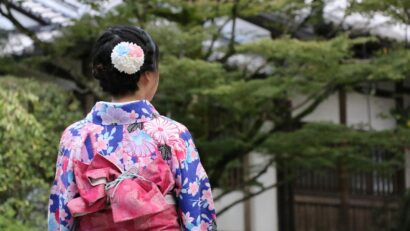New Year Traditions
In Romanian tradition, the first day of the New Year was known as Little Christmas, because most of the rituals related to the period were actually enacted in spring. Moreover, many rituals are associated with this time, such as Plugusorul, which literally means “little plough. Plugusorul is a specific carol which people, young men in particular, sing on the morning of January 1st to herald the New Year.

România Internațional, 28.12.2018, 16:37
In Romanian tradition, the first day of the New Year was known as Little Christmas, because most of the rituals related to the period were actually enacted in spring. Moreover, many rituals are associated with this time, such as Plugusorul, which literally means “little plough. Plugusorul is a specific carol which people, young men in particular, sing on the morning of January 1st to herald the New Year.
Little Christmas was meant to reintegrate mans day-to-day life into the wider historical framework after a period of soul-searching that ended on Christmas Day. Carols represent the most important New Year tradition in Romania. In regions such as Maramures, in northern Romania, New Years wishes are still delivered in their archaic form.
Many customs in Maramures are related to caroling, as caroling still continues once Christmas has passed. The period between Christmas and the New Year is usually known for mask caroling. The mask is an important element in the traditional mindset. It is an imaginary representation of the world beyond. They usually depict figures of old men, totemic animals or plants that help man reintegrate and reconnect to the world of the living or the white world, as it is ethnologically called. We therefore have pageants of masked men. The old man mask is deeply rooted in ancient traditions. The old woman and the old man usually acted as mediators between the worlds.
The old mens dance in Maramures is highly symbolic. The men form a circle and strike the ground with their staffs. They also touch everyone attending the ritual with their staff, which has a rich symbolic value. The dance pays tribute to the cult of the ancestors, who are believed to restore any unbalance in the world. Then we have goat masks. The goat plays a fundamental role, as it dies and is reborn. She stands for the old year that comes to an end and the New Year, which comes with its abundance of blessings. Devil masks symbolize evil. Their role is to warn and recall people that there can be no good without evil, just as there can be no evil without good. Traditional communities have always brought these elements together in rituals.
In the north-west of Romania, in Maramures, groups of carolers known as “brondosi in Romanian go from house to house every day between Christmas and New Year dressed in full costume and wearing masks made up of sheep skin. They carry bells and whips and the sound they produce is meant to drive away evil spirits from the community ahead of the New Year. According to a pre-Christian tradition, a number of rituals were performed on New Years Eve to ward off bad spirits and persuade the sun to stay longer in the sky. These groups of traditional carolers are today a popular tourist attraction.
On New Years Eve, they put on the costumes they have inherited from their predecessors and go caroling from house to house. In Moldavia, in the east and north-east, a similar ritual is known as the “bears dance. Young men dressed in costumes made of bearskin and accompanied by musicians and drummers walk through every street in the village striking their whips in the air. People welcome them into their homes and ask them to perform the “bears dance in their gardens as part of a fertility rite. The bears dance stems from an ancient tradition. The bear was in fact considered a sacred animal by the Romanians ancestors, the Geto-Dacians.
A ritual we find all over the country is wishing someone best wishes in the New Year while touching them lightly with the ‘sorcova, a stick adorned with artificial flowers. By this ritual gesture, a transfer of power is taking place from the vegetal to the human world. Other widespread New Year rituals are the predictions of future marriages. In Maramures, for example, young unmarried women go out into the garden on New Years Eve, climb on the log used for cutting the firewood and wait until the name of a young man is called out. It is believed she will marry someone bearing this name and coming from the direction wherefrom she hears the name being called out.
Superstitions were also important for people living in traditional communities. It was believed, for example, that evil spirits are afraid of powerful sounds and light, so people would light big fires on New Years Eve to drive these spirits away. Also, people would not lock their house doors on this evening so as to give a good welcome to the year to come.






























